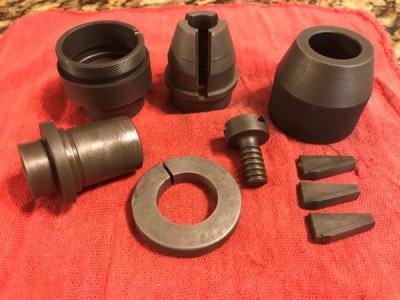- Joined
- Jan 17, 2017
- Messages
- 16
I have an Albrecht chuck that was suffering from neglect - lots of surface rust and some pitting. Given the knurling, threading, small passages, etc., Scotchbrite would not remove the rust. After some study, I decided to try one of Lyle Peterson's solutions, and dunked the pieces in white vinegar. After an 18 hour soak, most of the rust was gone, and the parts were covered with a black, oily film. Light scrubbing with fine Scotchbrite and hot water removed the film, but there was still some rust in the knurling and a few pits. Changed the vinegar and set it aside. Three days later all the rust was gone. Under the black film, the metal had changed color to a relatively uniform deep grey. More hot water and Scotchbrite, and a little time in the toaster oven to ensure the parts were dry.
I have gooped the parts with LPS-3 to keep the rust at bay, but I know it is not a good long-term solution, since some internal components must be assembled dry to function correctly.
Any suggestions on a process or product I can use at home to protect the steel?

I have gooped the parts with LPS-3 to keep the rust at bay, but I know it is not a good long-term solution, since some internal components must be assembled dry to function correctly.
Any suggestions on a process or product I can use at home to protect the steel?

Last edited:

